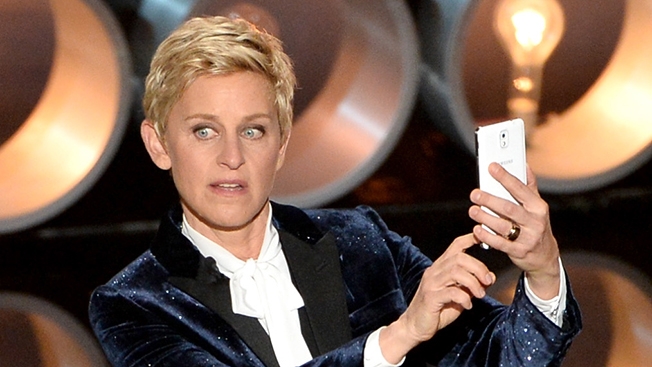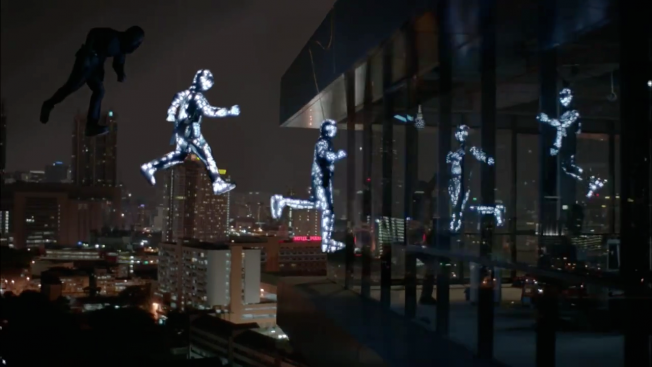![]()
Early in the Super Bowl’s first quarter, Jaguar found itself playing defense. Lexus—not even a big game advertiser—was buying space on Twitter, piggybacking on its #goodtobebad hashtag.
When you’re cultivating a bad boy image with villainous Brits in your commercials, you don’t abide rivals squatting on your hashtag. Jaguar planned for this kind of game day action; its ad team was holed up in a rapid response social media center, which they dubbed the “Villains’ Lair.”
Jaguar’s ad agency Mindshare calls these rooms The Loop, with flat screens flashing Google trends, social media feeds, sentiment trackers, digital ad click counts and similar data on competing brands. During the Super Bowl, dozens of people on Jaguar and Mindshare’s team were plugged in, and Twitter’s people were there, too, ready to assist in moments like these.
Quickly, Jaguar needed to defend its hashtag #goodtobebad, and that meant outbidding its competitors, as well as noncar companies throughout the night. At one point Esurance had promoted against the Jaguar hashtag. Later in the game, Audi would snatch promoted territory against Jaguar, too.
The U.K. car company, however, kept its footing for most of the night, controlling its key terms while at points encroaching on its rivals’ Twitter turf. It was all part of the ad game within the big game, and Adweek had a front row seat in Jaguar’s war room. (Another one of Mindshare’s client’s, Unilever, marketing Axe body spray, also was in the New York offices, but did not allow a reporter to see its command center.)
Unilever spent $500,000 on social media marketing on Sunday, according to The Wall Street Journal. It also bought the lone Promoted Trend of the day on Twitter, the ultimate—and expensive—defense against competitors. No one would show higher than Axe under the hashtag #kissforpeace.
![]()
Jaguar plugs into The Loop command center on game day at
Mindshare's New York office.
Jaguar and Mindshare did not reveal how much they had in the war chest, but they were ready to spend in an instant and did. That’s why it was crucial to have Jaguar, its creative team and Twitter all in one place.
“Having people in the room making decisions and being able to buy in real time is important,” said Jeff Curry, Jaguar North America’s brand vp.
Super Bowl advertisers embrace Twitter more every year, and this year hashtags were shown in 57 percent of the ads, compared to 50 percent last year. There were also a record number of Super Bowl-related tweets this year.
The game is the ultimate stage for the social messaging site, showing off how marketers take to the network to either respond to rivals’ TV commercials or augment their own. It is the second-screen in action, especially during live events like this one.
Thus, instead of striving to show the best commercial, advertisers are looking to create the most popular tweet. Even the marketers who don’t have Super Bowl spots are sniping from the social media sidelines.
While they can’t prepare for every contingency, say Joe Namath in a ’70s fur coat during the coin toss, these social media strategies are developed well in advance. Jaguar was in New York all week huddling with Mindshare.
"We’ve been establishing this villainous tone of voice,” said Joe Quattrone, Mindshare’s lead on the Jaguar social media strategy. “It’s how we want to behave and react in everything we do tonight.”
Jaguar has been playing the villain for months, responding to marketing from Mercedes on YouTube last year, and hiring British actors—Ben Kingsley, Tom Hiddleston and Mark Strong—who are known for some evil roles. With director Tom Hooper, Jaguar created the 60-second Super Bowl commercial “Rendezvous” and online content it says is worthy of binge viewing.
The commercial on Sunday helped drive 20,000 website visits within minutes after the ad aired in the fourth quarter, Quattrone said. And Jaguar was at its most evil when tweeting at the auto brand Maserati after its spot showed the new Ghibli car.
“Did you know that Ghibli means hot air,” Jaguar’s social media team tweeted. With 179 retweets, that was one of their highest performing messages for the brand.
“That’s the voice we’ve been cultivating the past three months,” Quattrone said.
Jaguar also took on Audi. Late in the game, prices started coming down on Twitter, and Jaguar was able to buy in places it was not expecting, Quattrone said. “We made a couple of key decisions about where to place money,” he said. “We upped the level of investment on conquesting Audi keyword terms.”
Besides car brands, Jaguar was also in a back and forth with totally unrelated companies like Tide and Tidy Cats.
In the case of Tide, the detergent company made Vine videos that reacted to the TV commercials of other brands. Jaguar’s creative team, Spark 44, saw Tide’s strategy and shot a Vine in response.
The Vine showed laundered shirts and black gloves, and a hint of a Tide bottle: “A proper British villain is always prepared. No matter how messy it gets.”
The on-the-fly Vine ended with a card that read: #goodtobebad.
On this Super Bowl Sunday, for Jaguar's social media team, it was good to be bad—and better to be quick.


























